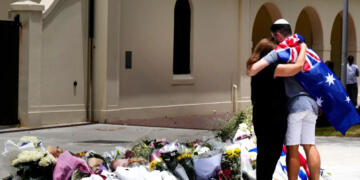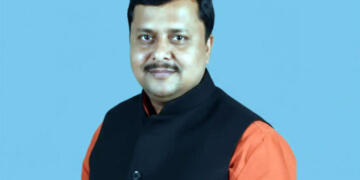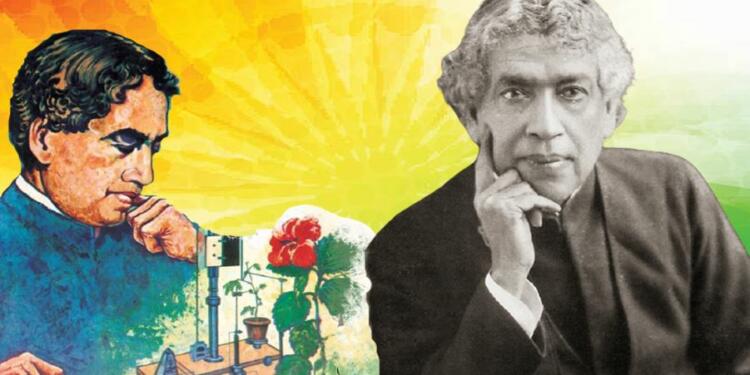A physicist, botanist, biologist, author, and creator – Jagadish Chandra Bose was a man of many talents, and today, the country is celebrating the 163rd birth anniversary of a scientist who became the name and face of modern science in the Indian subcontinent, eventually earning the sobriquet of the ‘father of wireless communication’.
In November 1895, Jagadish Chandra Bose presented a public demonstration at Town Hall in Calcutta, where he sent an electromagnetic wave across 75 feet, passing through walls to remotely ring a bell and to explode some gunpowder.
The polymath also invented the Mercury Coherer, a radio wave receiver that was later used by Guglielmo Marconi to build an operational two-way radio.
Also read: 5 Indian Scientists who deserve their own Biopics
A full one year before Marconi, Bose managed to show the practical use of microwave and wireless technology, but because of his aversion to patents, he never trademarked his invention. He believed knowledge should be available to everyone and not constrained by patenting.
Although Jagadish Bose played a pivotal role in the development of wireless technology, the west to this date, hasn’t recognized his contributions.
The Genesis:
Jagadish Chandra Bose was born in Mymensingh (now in Bangladesh), on November 30, 1858, to Bhagawan Chandra Bose, an assistant commissioner in the government, and member of the Brahmo Samaj. Mr. Bhagawan sent his son to study in a vernacular school in Faridpur.
Talking about his experience of attending a vernacular school, Bose had famously remarked, “At that time, sending children to English schools was an aristocratic status symbol. In the vernacular school, to which I was sent, the son of the Muslim attendant of my father sat on my right side, and the son of a fisherman sat on my left. They were my playmates.”
He later moved to Kolkata, and studied initially in Hare School (named after the Scottish philanthropist and educationist David Hare) and was subsequently enrolled in St. Xavier’s school, where he developed a keen interest in Physics. Later, he graduated in physics from Calcutta University.
In 1880, Bose went to England where he studied medicine at London University, England for a year but gave it up because of his own ill health. Within a year he moved to Cambridge to take up a scholarship to study Natural Science at Christ’s College Cambridge.
There, he was taught by noted teachers Francis Darwin, James Dewar and Michael Foster. During his stay in England, he also befriended Prafulla Chandra Ray, who later attained fame as a chemist.
In 1885, he returned from abroad with a B.Sc. degree and Natural Science Tripos (a special course of study at Cambridge). Upon returning to India, Bose was appointed professor of physical science at Presidency College, Calcutta.
However, the Britishers openly discriminated against him, indulging in racism, with his salary being much lower than that of his British counterparts.
Jagadish Chandra Bose and his proteges:
After three years, the college ultimately conceded his demand, and Jagadish Chandra Bose was paid full salary from the date he joined the college. However, during the entire episode, Bose didn’t allow the controversy to affect his equation with the students.
Akin to his brilliant multifaceted nature, Bose was a teacher par excellence. He was very popular and engaged the interest of his students by making extensive use of scientific demonstrations. Many of his students at the Presidency College were destined to become famous in their own right. These included Satyendra Nath Bose and Meghnad Saha.
It was Meghnad, who developed the Saha ionization equation, used to describe chemical and physical conditions in stars. His work allowed astronomers to accurately relate the spectral classes of stars to their actual temperatures.
Meanwhile, Satyendra Nath Bose, one of Jagadish’s most brilliant protégé’s went on to collaborate with Albert Einstein in developing the foundation for Bose-Einstein statistics and the theory of the Bose-Einstein condensate.
Also read: 4500 years back when the West survived on half-cooked meat, Indians enjoyed multi-grain laddoos
Bose later switched from physics to the study of metals, and then plants. He invented the Crescograph, a device that measures tiny reactions and changes in plant cells in response to stimuli. He proved that plants have life. He later authored two illustrious books; ‘Response in the Living and Non-living’ (1902) and ‘The Nervous Mechanism of Plants’ (1926).
Bose – the Bengali science fiction writer:
Between his experiments, Bose also found time to write science fiction in Bengali. His famous story – Polatok Tufan (Absconding Storm) published in 1921, describes how a cyclone was stopped using a bottle of hair oil. It explained how oil changes the surface tension and holds water.
However, it was his first book Niruddesher Kahini (The Story of the Missing One) published in 1896, that was the first major Bengali science fiction novel and laid the foundation of the genre.
Such was the genius of Bose, that his compatriots like Sir Nevill Mott, who won the Nobel Prize in 1977, remarked that the Indian scientist was about 60 years ahead of his time, and had rightly predicted use of N-type and P-type semiconductors in the future.
He was knighted in 1917, and was elected a Fellow of the Royal Society in 1920. The Acharya Jagadish Chandra Bose Indian Botanic Garden was named after him. He died in Giridih, now in Jharkhand, on November 23, 1937.






























